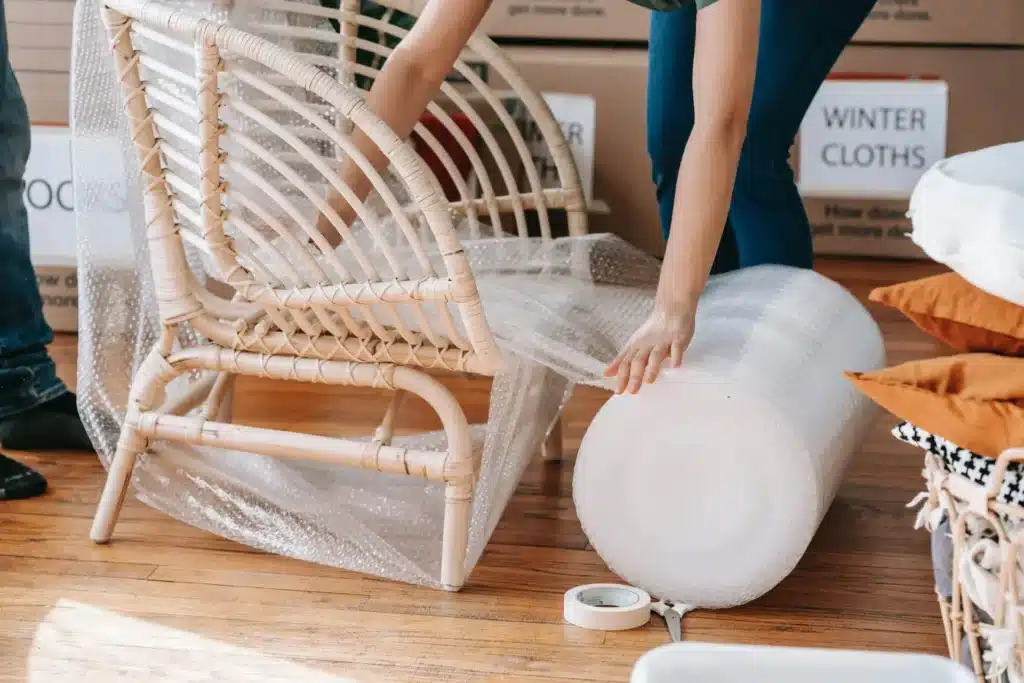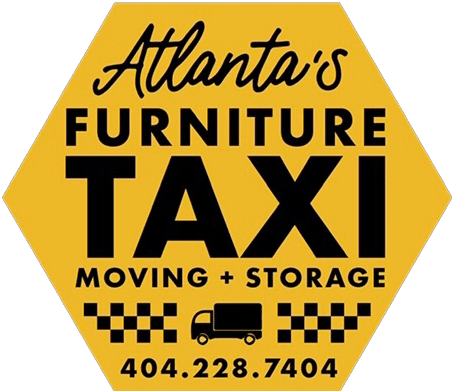
Moving homes or offices is a significant milestone in anyone’s life. It signifies change, new beginnings, and the promise of fresh experiences. However, the process of moving can be daunting, especially when it involves transporting valuable furniture. The mere thought of your cherished furniture items getting scratched, dented, or damaged can be unsettling. This guide delves deep into the art and science of furniture damage prevention, offering a comprehensive roadmap to ensure your furniture remains in impeccable condition during your move.
Table of Contents
ToggleThe Basics of Furniture Damage Prevention
Protecting your furniture during a move goes beyond just wrapping it up. It’s a meticulous process that requires planning, the right materials, and an understanding of potential risks.
Importance of Planning Ahead
A successful move is often a well-planned move. Before you even start packing, assess your furniture. Identify fragile items, detachable parts, and note down any existing damage. This initial assessment will guide your packing strategy, ensuring you give extra attention to vulnerable items.
The Cost Implications of Damaged Furniture
Beyond the immediate repair or replacement costs, damaged furniture can have sentimental value, making its loss even more profound. Moreover, certain damages can render furniture unusable, leading to unexpected replacement costs amidst the already expensive moving process.
Protective Materials: More Than Just Bubble Wrap
While bubble wrap is a popular choice for many movers, the world of protective materials is vast and varied. Each type of furniture, from glass tabletops to wooden chairs, requires specific protective measures.
Different Types of Protective Materials and Their Uses
From stretch wrap to corrugated cardboard sheets, the choices are plenty. For instance, stretch wrap is excellent for upholstered furniture, keeping dirt and moisture out. On the other hand, corrugated cardboard sheets can provide a rigid protective layer for glass surfaces.
Importance of Quality Materials
Skimping on quality might save you a few bucks now but could cost you dearly later. High-quality protective materials are designed to withstand the rigors of moving, ensuring your furniture remains unscathed.
The Role of Corner Guards
Corners are often the Achilles heel of furniture when moving. They are prone to dings, scratches, and breaks. Corner guards are specifically designed to protect these vulnerable points.
How Corner Guards Protect Vulnerable Furniture Parts
These guards, made of foam, plastic, or rubber, fit snugly over furniture corners. They act as a buffer, absorbing shocks and preventing direct impacts that can cause chipping or breaking.
Different Types of Corner Guards Available
The market offers a variety of corner guards, each tailored for different furniture types. For instance, rubber guards with adhesive backs are perfect for glass tables, while foam guards might be better suited for wooden furniture.
The Magic of Furniture Blankets
Often overlooked, furniture blankets are the unsung heroes of a damage-free move. These padded protectors are essential for ensuring your furniture remains scratch and dent-free during the tumultuous journey.
Why Furniture Blankets are Essential
Unlike regular blankets, furniture blankets are crafted with multiple layers of padding and durable fabric. They serve as a cushion, preventing direct contact between furniture pieces and protecting against potential impacts during transit. Whether it’s a vintage wooden dresser or a sleek modern sofa, wrapping them in furniture blankets can make all the difference.
Proper Ways to Wrap Furniture Using Blankets
It’s not just about draping a blanket over your furniture. Proper wrapping involves:
- Laying the Blanket Flat: Start by spreading the furniture blanket on the ground, ensuring it’s free from dirt or debris.
- Positioning the Furniture: Place the furniture item in the center of the blanket.
- Folding and Tucking: Begin by folding the blanket’s edges over the furniture, ensuring every part is covered. For longer items, you might need multiple blankets. Ensure there’s overlap, so no part of the furniture is exposed.
- Securing the Blanket: Once wrapped, secure the blanket using packing tape or stretch wrap. This ensures the blanket stays in place during the move.
Proper Lifting Techniques
While protective materials are crucial, the way you handle your furniture is equally important. Improper lifting can lead to not only damage to your furniture but also potential injuries.
The Science Behind Lifting Heavy Objects
Lifting isn’t merely about muscle power; it’s about technique and understanding the weight distribution of the item you’re lifting. The key is to use your legs, which are stronger and more stable than your back. Bending your knees and keeping the item close to your body ensures a safer and more efficient lift.
How to Lift Furniture Without Causing Damage or Injury
- Clear the Path: Before lifting, ensure the path is clear of obstacles. This reduces the chances of tripping or bumping into things.
- Get Help: If an item feels too heavy, don’t risk it. Get another person to help or use moving equipment like a dolly.
- Grip Properly: Ensure you have a firm grip. Using gloves can provide better traction and prevent slips.
- Lift Slowly: Rapid movements can lead to muscle strains or furniture damage. Lift slowly and steadily, ensuring you maintain balance.
Transport Precautions: Ensuring Safe Transit
Once your furniture is wrapped and ready, the next challenge is ensuring it remains safe during transit. The journey, filled with turns, bumps, and stops, can be the most hazardous part of the move.
Importance of Secure Loading
Properly loading your furniture into the moving truck is crucial. Items should be placed in a way that prevents movement during transit. Heavy items should be at the bottom, with lighter items on top. Spaces between items should be filled with cushions or other padding to prevent shifting.
The Role of Moving Tools and Equipment
Leverage tools like furniture dollies, sliders, and straps. These not only make the moving process easier but also safer. For instance, using straps can secure items in place, preventing them from moving during sudden stops.
The Hidden Dangers in Your Home
While the journey on the road poses risks, the initial phase of moving furniture out of your home has its own set of challenges. Narrow doorways, tight corners, and stairs can become unexpected adversaries in the quest to keep your furniture damage-free.
Identifying Potential Hazards During the Moving Process
Before you start moving furniture, take a walk through your home. Identify potential problem areas such as:
- Narrow Doorways: Measure doorways to ensure larger furniture pieces can pass through without scraping the sides.
- Tight Corners: Plan how to navigate larger items around tight corners, especially in hallways.
- Stairs: Consider the angle and width of staircases. Moving heavy furniture downstairs can be particularly challenging.
Tips to Navigate Through Tight Spaces
- Disassemble When Possible: Items like bed frames, desks, and wardrobes can often be taken apart. This not only makes them easier to move but also reduces the risk of damage.
- Use Sliders: Furniture sliders, placed under the legs of heavy furniture, can help in smoothly moving them across floors without causing scratches.
- Lifting Straps: These can redistribute the weight of the furniture and give better leverage, especially useful for tall items.
Accidental vs. Neglectful Damage: Know the Difference
While all damages are unfortunate, understanding their cause can help in prevention. Some damages are purely accidental, while others result from neglect or oversight.
How to Differentiate Between Unavoidable and Avoidable Damages
- Accidental Damage: This is unforeseen and happens despite taking all precautions. For instance, a sudden brake during transit causing items to shift.
- Neglectful Damage: This results from not taking necessary precautions, like not using protective materials or incorrect lifting techniques.
The Financial and Emotional Costs of Neglect
Neglectful damage can be more costly than accidental damage. Not just in terms of repair or replacement costs, but also the emotional distress of damaging cherished items due to oversight.
The Role of Professional Movers
While DIY moving has its merits, there’s a lot to be said for the expertise and equipment that professional movers bring to the table.
A. Why Hiring Professionals Can Be a Game-Changer
- Expertise: Professional movers have the experience of handling all types of furniture. They can anticipate challenges and have solutions ready.
- Equipment: From specialized moving trucks to a range of protective materials, movers come equipped with everything needed for a safe move.
- Insurance: Most professional moving companies offer insurance, ensuring you’re covered in case of any damages.
B. How to Choose the Right Moving Company
- Research: Look for companies with good reviews and recommendations.
- Ask Questions: Understand their process, the materials they use, and if they offer insurance.
- Get Estimates: A reputable moving company will offer a transparent pricing structure without hidden costs.
Pre-Move Preparations: A Checklist for Success
Before the moving day arrives, it’s essential to be well-prepared. A systematic approach can significantly reduce the chances of damage and ensure a smooth transition.
Inventory and Labeling
- Cataloging Your Furniture: Before you start packing, make a detailed list of all your furniture items. This not only helps in keeping track but also in deciding which items might need special attention.
- Labeling for Caution: Clearly label items, especially if they contain fragile parts. This will alert anyone handling the furniture to be extra cautious.
Cleaning and Maintenance
- Clean Before You Pack: Dust and dirt can cause scratches during the move. Ensure all items are clean and dry.
- Secure Loose Parts: Ensure that all parts of your furniture are secure. Tighten any loose bolts or screws to reduce the risk of parts coming loose during transit.
Post-Move Care: Assessing and Addressing Damages
After the move, it’s crucial to assess your furniture for any potential damages. Addressing them promptly can prevent further deterioration.
Immediate Assessment
- Check Against Inventory: Ensure all items are accounted for.
- Inspect for Damages: Look for any visible damages. It’s crucial to do this immediately, especially if you’ve hired professional movers and need to make a claim.
Addressing and Repairing Damages
- DIY Repairs: For small scratches or dents, consider DIY solutions or furniture repair kits.
- Seeking Professional Help: For significant damages, especially to valuable items, consider hiring a professional furniture repair service.
DIY vs. Professional Moving: Pros and Cons
The decision between taking a DIY approach to moving or hiring professionals is often a tough one. Both have their merits and drawbacks.
DIY Moving
- Pros:
-
- Cost-Effective: Often cheaper as you’re not paying for labor.
- Flexibility: Move at your own pace and on your preferred schedule.
- Cons:
- Time-Consuming: Without professional equipment and expertise, the process can be lengthy.
- Risk of Damage: Without the proper tools and techniques, there’s a higher risk of damaging your furniture.
Professional Moving
- Pros:
-
- Efficiency: Professionals have the tools and expertise to move quickly.
- Safety: Trained movers know how to handle furniture without causing damage or injuring themselves.
- Cons:
- Cost: Hiring professionals can be more expensive than a DIY move.
- Availability: You might have to schedule your move based on the movers’ availability.
The Importance of Choosing a Reputable Moving Company
Entrusting your valuable furniture to a moving company is a significant decision. The right choice can ensure a hassle-free move, while a wrong one can lead to damages, delays, and added costs.
The Risks of Settling for Less
- Untrained Staff: Less reputable companies might employ staff without proper training, increasing the risk of damages during the move.
- Hidden Costs: Some companies might quote a low price initially but add hidden charges later, leading to unexpected expenses.
- Lack of Insurance: Without proper insurance, any damages to your furniture might not be covered, leading to out-of-pocket repair or replacement costs.
Benefits of Hiring a Trusted Mover
- Peace of Mind: Knowing that professionals are handling your furniture can significantly reduce moving-day stress.
- Efficiency: Reputable movers have the experience and tools to complete the move efficiently, saving you time.
- Insurance Coverage: Trusted moving companies offer comprehensive insurance, ensuring you’re covered in case of any damages.
Harnessing Digital Resources for a Seamless Move
In today’s interconnected world, the internet offers invaluable resources for almost every aspect of our lives, and moving is no exception. Platforms like Atlanta Movers have revolutionized the way we approach relocations, providing tools, tips, and services at our fingertips.
Leveraging Online Resources for a Smooth Move
- Planning and Tips: Comprehensive guides and articles available online can significantly simplify the moving process, offering insights from packing to furniture care during transit.
- Service Booking: The convenience of online booking eliminates the need for physical visits. With the added advantage of customer reviews and ratings, making an informed choice has never been easier.
- Cost Estimation: Digital platforms often feature cost calculators, allowing users to get a ballpark figure of their moving expenses, aiding in budgeting and planning.
The Value of Customer Reviews and Testimonials
- Real Experiences: Delving into reviews provides a glimpse into the experiences of past customers, offering a realistic expectation of the services.
- Making an Informed Decision: Testimonials, both positive and critical, can spotlight a company’s strengths and potential red flags, guiding your decision-making process.
Conclusion
Moving can be a daunting task, filled with challenges and uncertainties. Ensuring the safety of your furniture is paramount, and with the right strategies and resources, it’s entirely achievable. From understanding the basics of damage prevention to harnessing the power of digital platforms, every step can contribute to a smoother, more efficient move. As you embark on this journey, remember that preparation is key, and leveraging expert advice can make all the difference.
If you’re looking for professional assistance or more insights into making your move seamless, visit Atlanta Furniture Movers. Their expertise and comprehensive services are designed to cater to all your moving needs, ensuring peace of mind every step of the way.
Frequently Asked Questions
Utilize protective materials like furniture blankets, corner guards, and bubble wrap. Dismantle larger items if possible and ensure all pieces are securely packed in the moving truck.
Ensure that all furniture surfaces are covered with soft padding or blankets. Avoid placing heavy items on top of furniture in the moving truck. Use furniture sliders when moving items across floors.
While DIY can save costs, professional movers have the expertise and equipment to ensure safe and efficient furniture relocation. Consider factors like the quantity, value, and weight of items before deciding.







